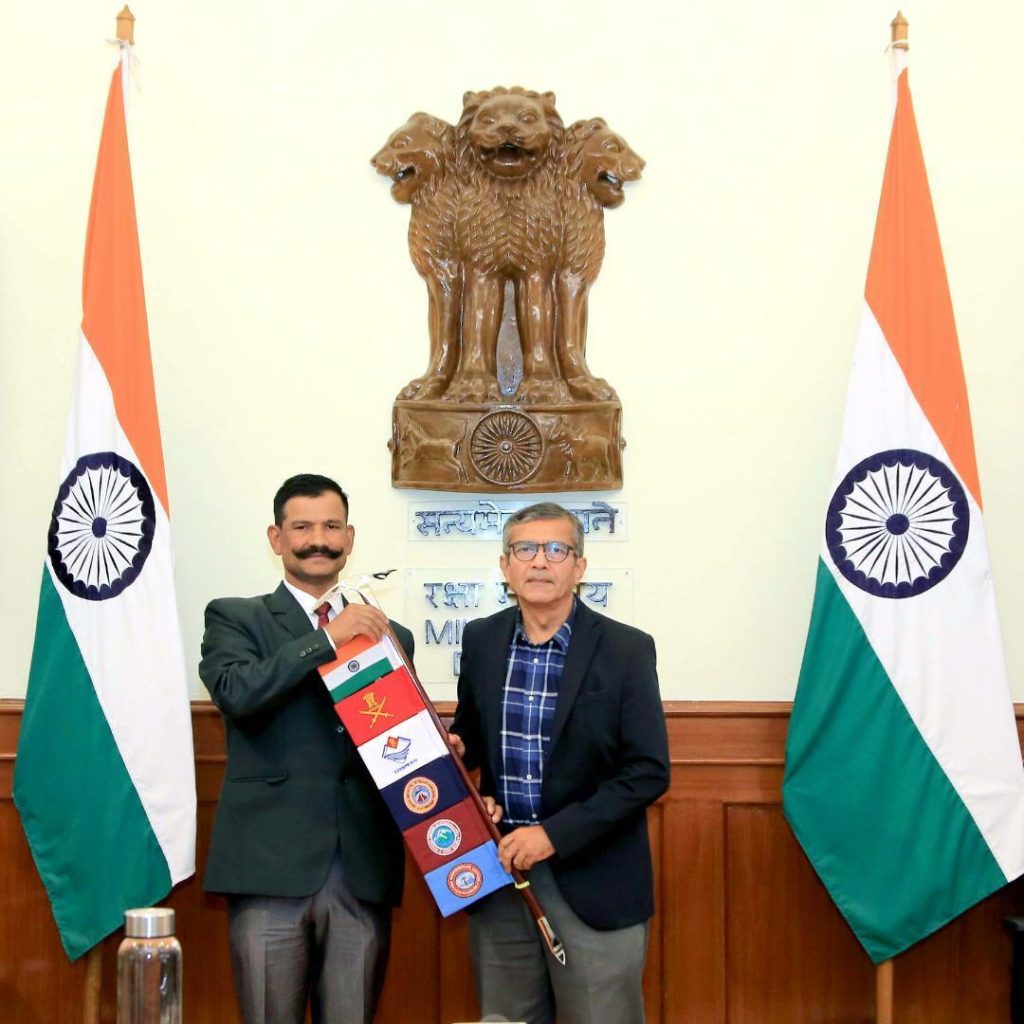
India Flags-in Mount Everest & Kilimanjaro Expeditions
On July 17, 2025, a momentous occasion was marked as Defence Secretary Rajesh Kumar Singh flagged off two major mountaineering expeditions to Mount Everest and Kilimanjaro. These expeditions not only showcased India’s mountaineering prowess but also demonstrated the country’s leadership in adventure sports across land, sea, and air.
Nehru Institute of Mountaineering’s 60th Anniversary
The Everest expedition was a special one, as it marked the 60th anniversary of the Nehru Institute of Mountaineering (NIM). Established in 1965, NIM has been instrumental in promoting mountaineering and adventure sports in India. The institute has produced several notable mountaineers and has been involved in various expeditions around the world. The Everest expedition was a testament to NIM’s dedication to its mission and its commitment to pushing the boundaries of human achievement.
Divyangjan Climber Uday Kumar
One of the highlights of the Kilimanjaro expedition was the participation of Divyangjan climber Uday Kumar. Uday, who has been paralyzed from the waist down since a spinal cord injury, was determined to conquer the highest peak in Africa. His bravery and determination inspired his teammates and the entire expedition team. Uday’s participation in the expedition was a shining example of India’s commitment to inclusivity and accessibility in adventure sports.
Expedition Teams
The Everest expedition team consisted of 14 members, including experienced mountaineers, guides, and support staff. The team was led by Captain Deepak Mehra, a seasoned mountaineer with several expeditions under his belt. The team is expected to reach the summit of Mount Everest, which stands at 8,848 meters (29,029 feet) above sea level, in mid-August.
The Kilimanjaro expedition team, on the other hand, consisted of 12 members, including Uday Kumar and his support team. The team is led by Captain Rajnish Sharma, a experienced mountaineer and explorer. The team is expected to reach the summit of Kilimanjaro, which stands at 5,895 meters (19,341 feet) above sea level, in mid-September.
Challenges and Objectives
Both expeditions faced unique challenges, including harsh weather conditions, steep terrain, and logistical complexities. The Everest expedition team, for example, had to navigate through treacherous ice walls and steep rock faces to reach the summit. The Kilimanjaro expedition team, on the other hand, had to contend with thick clouds and mist, which made navigation difficult.
Despite these challenges, the expedition teams were determined to achieve their objectives. The Everest team aimed to reach the summit of the world’s highest peak, while the Kilimanjaro team aimed to reach the summit of the highest peak in Africa. Both teams were also tasked with promoting India’s mountaineering excellence and adventure leadership around the world.
Conclusion
The flagging off of the Mount Everest and Kilimanjaro expeditions marked a significant milestone in India’s mountaineering history. These expeditions showcased India’s mountaineering excellence, its leadership in adventure sports, and its commitment to inclusivity and accessibility. The expeditions also demonstrated the country’s ability to push the boundaries of human achievement and to inspire others to follow in their footsteps.
As the expedition teams embark on their journey, they will face many challenges and obstacles. However, with their expertise, determination, and sense of adventure, they are sure to overcome these challenges and achieve their objectives. The entire nation will be cheering them on, proud of their achievements and inspired by their bravery.
News Source:
https://www.refersms.com/mount-everest-kilimanjaro-expeditions/






